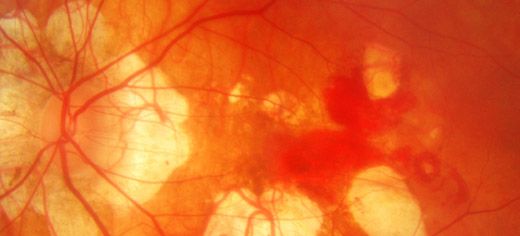
University of Leeds researchers have used next-generation DNA sequencing techniques to discover what causes a rare form of inherited eye disorders, including cataracts and glaucoma, in young children.
The findings should make it easier to identify families with this condition who are at risk of conceiving children with severely impaired vision, so they can receive appropriate genetic counselling. The work, co-led with colleagues at Flinders University in Adelaide, Australia, may also lead to new treatments for adults and children with this form of inherited blindness.
The researchers looked at DNA from three unrelated families. All families had members with a history of poor vision from birth, linked to problems with the eye's lens and cornea. Together, the lens and cornea make up the clear 'window' at the front of the eye. But if these structures do not develop correctly then this 'window' can become cloudy, making it difficult to see clearly. If the problems are not treated, they can get worse leading to glaucoma and eventually blindness.
Dr Manir Ali and colleagues discovered that all of the various family members with impaired vision had defects in an antioxidant protein known as peroxidasin that makes up part of the lens and cornea. They concluded that these defects are responsible for causing cataracts and glaucoma in children with this rare form of inherited eye disorders.
"We know that in healthy eyes, peroxidasin acts as a first line of defence against the damage that ultraviolet radiation and sunlight does to our skin. It may also help protect against cataracts in older people," Dr Ali said. "Our findings imply that this same protein is essential for the normal development of the lens and surrounding structures at the front of the eye."
Full details of the study are published in the latest issue of the American Journal of Human Genetics.
The discovery was made using next generation DNA sequencing, a new way of reading genes quickly and spotting errors that cause inherited diseases. Dr Ali and colleague now plan to use the same approach to screen all the eyes genes at once, so that all patients with inherited blindness can find out exactly what is causing their illness and can be given the appropriate treatment.
"This DNA sequencing technology looks set to revolutionise the medical world, giving patients and their doctors more information than ever before about their genetic make-up and how it can affect their health and response to treatment," Dr Ali said.
University of Leeds researchers received funding from the Wellcome Trust, the Sir Jules Thorn Charitable Trust, and Yorkshire Eye Research. The work was also supported by The Ophthalmic Research Institute of Australia, and The Eye Foundation and Sight for All.
The work was jointly directed by Dr Manir Ali (University of Leeds, UK) and Associate Professor Jamie Craig (Flinders Medical Centre, Australia).
For further information:
Please contact the University of Leeds Press Office on +44 (0)113 343 4031 or email pressoffice@leeds.ac.uk
The paper, 'Homozygous mutations in peroxidasin (PXDN) cause congenital cataract, corneal opacity and developmental glaucoma', is published online in the American Journal of Human Genetics (DOI 10.1016/j.ajhg.2011.08.005). Copies are available from Mary Beth O'Leary (moleary@cell.com) and Elisabeth Lyons (elyons@cell.com).